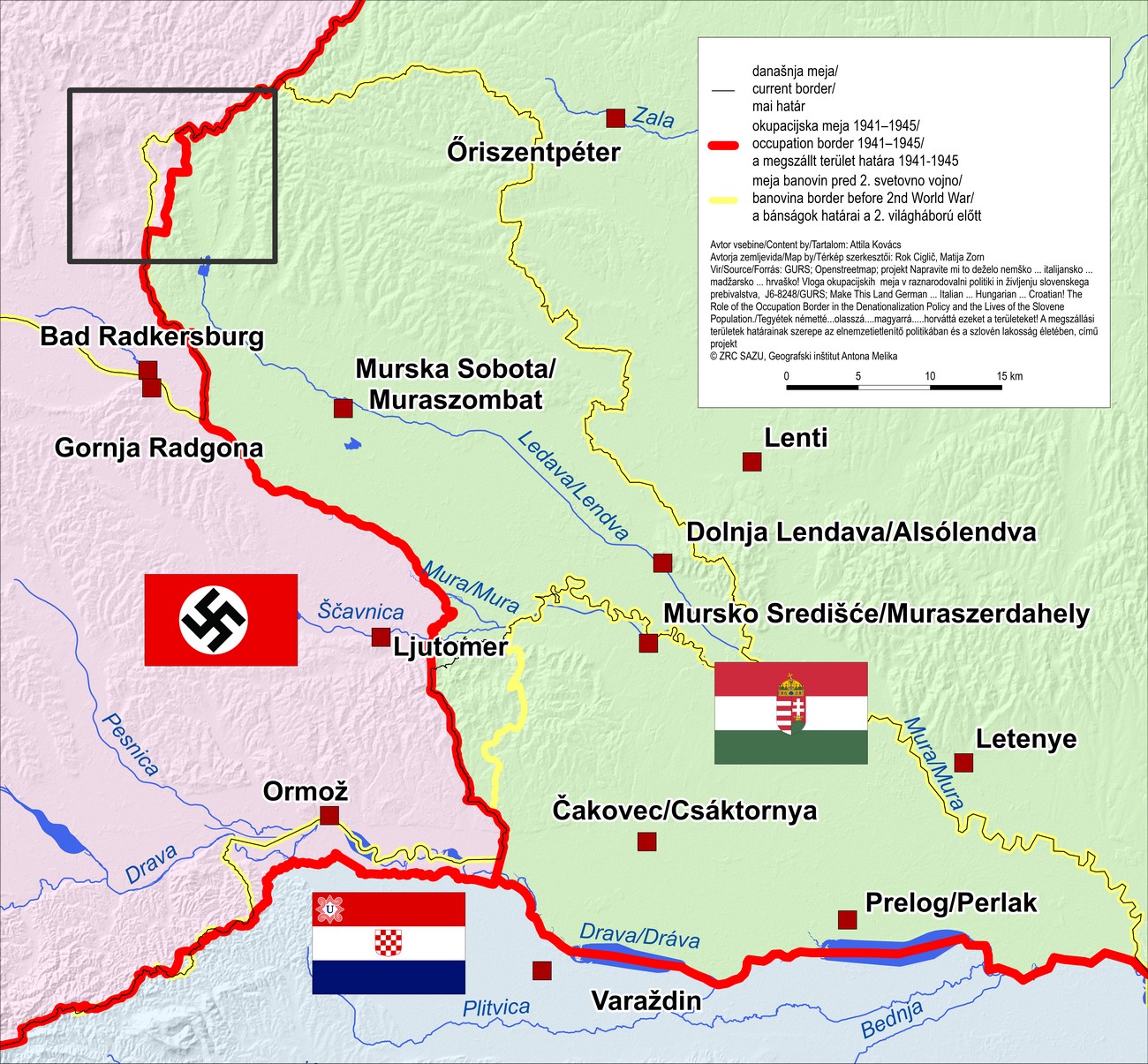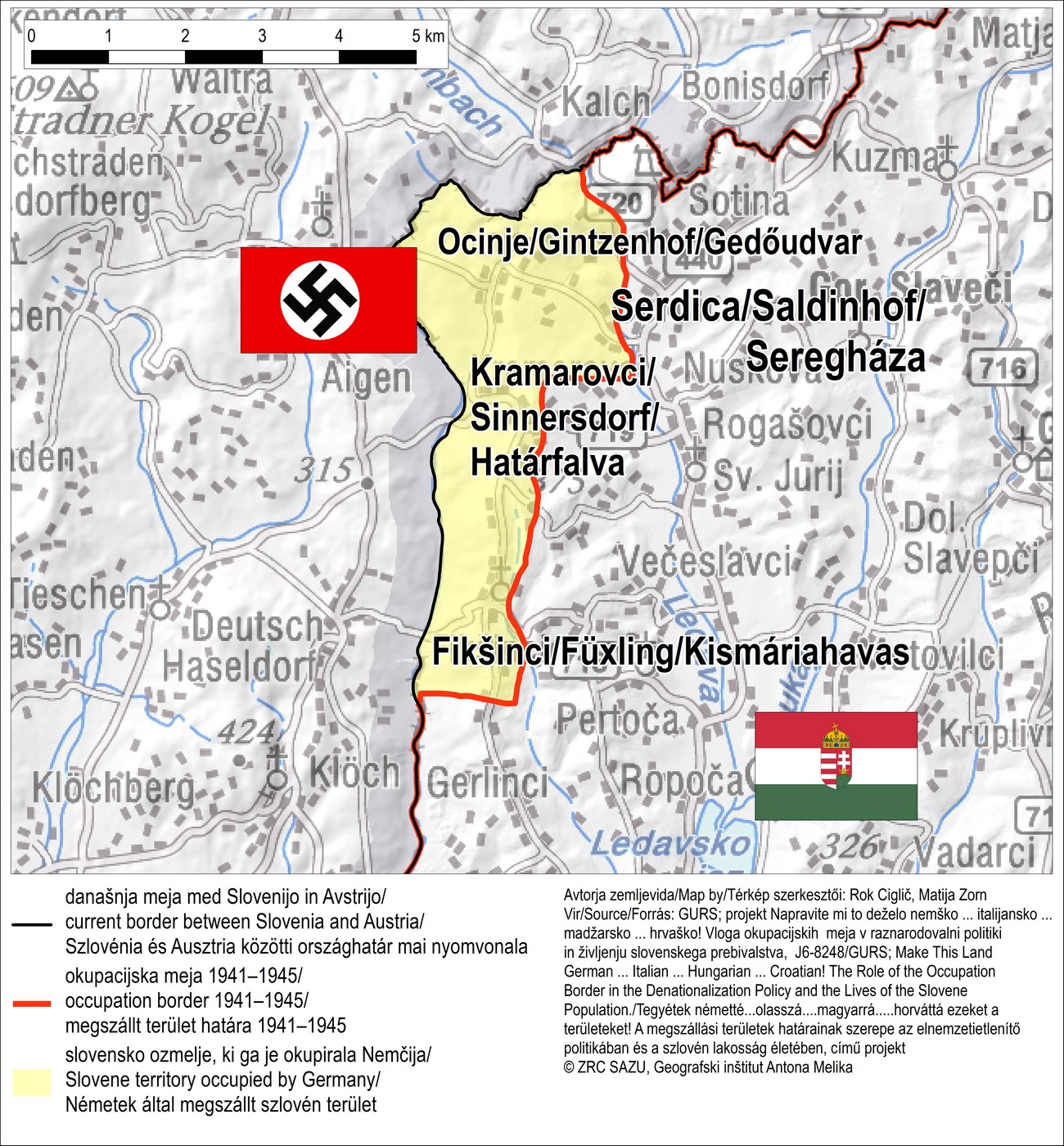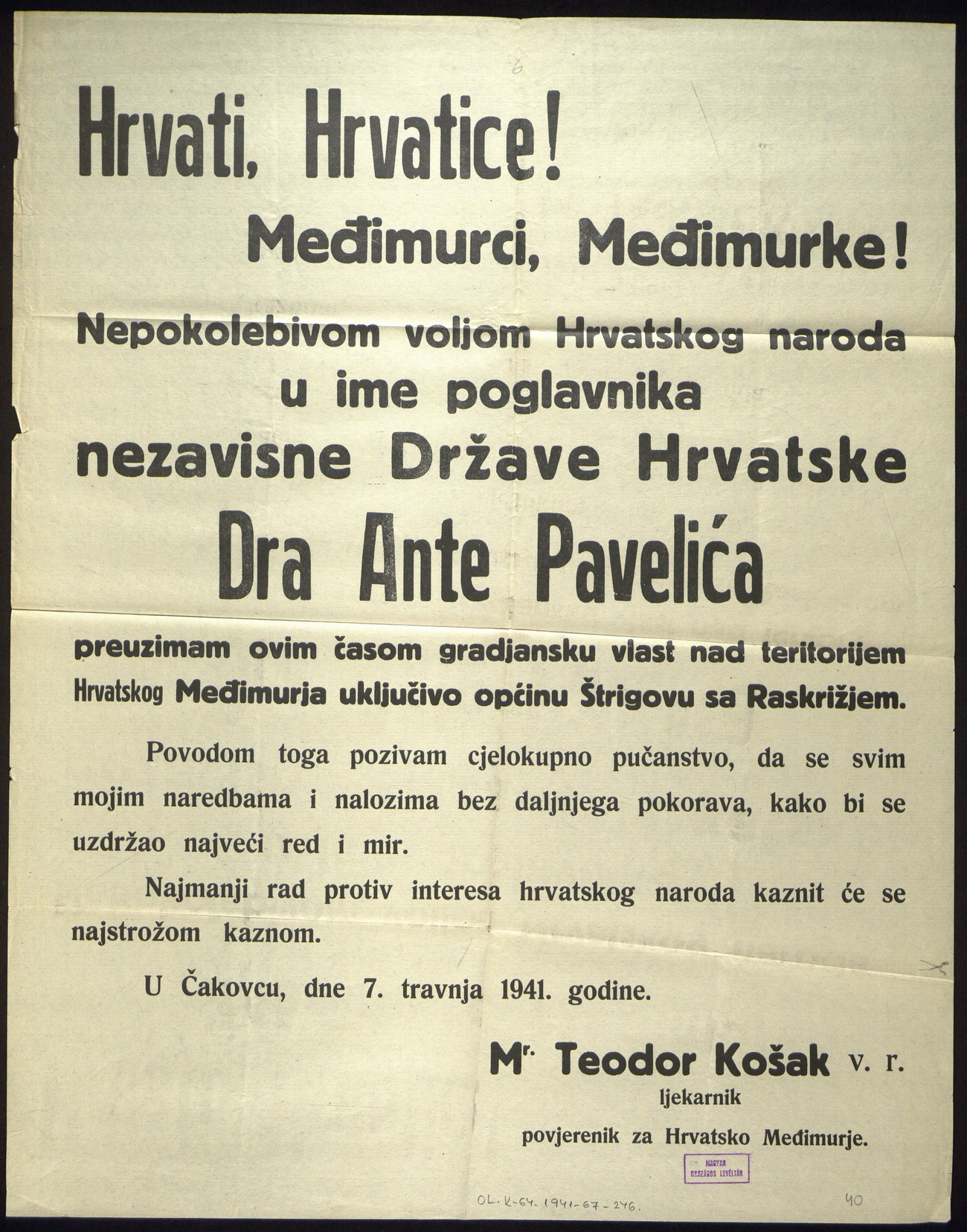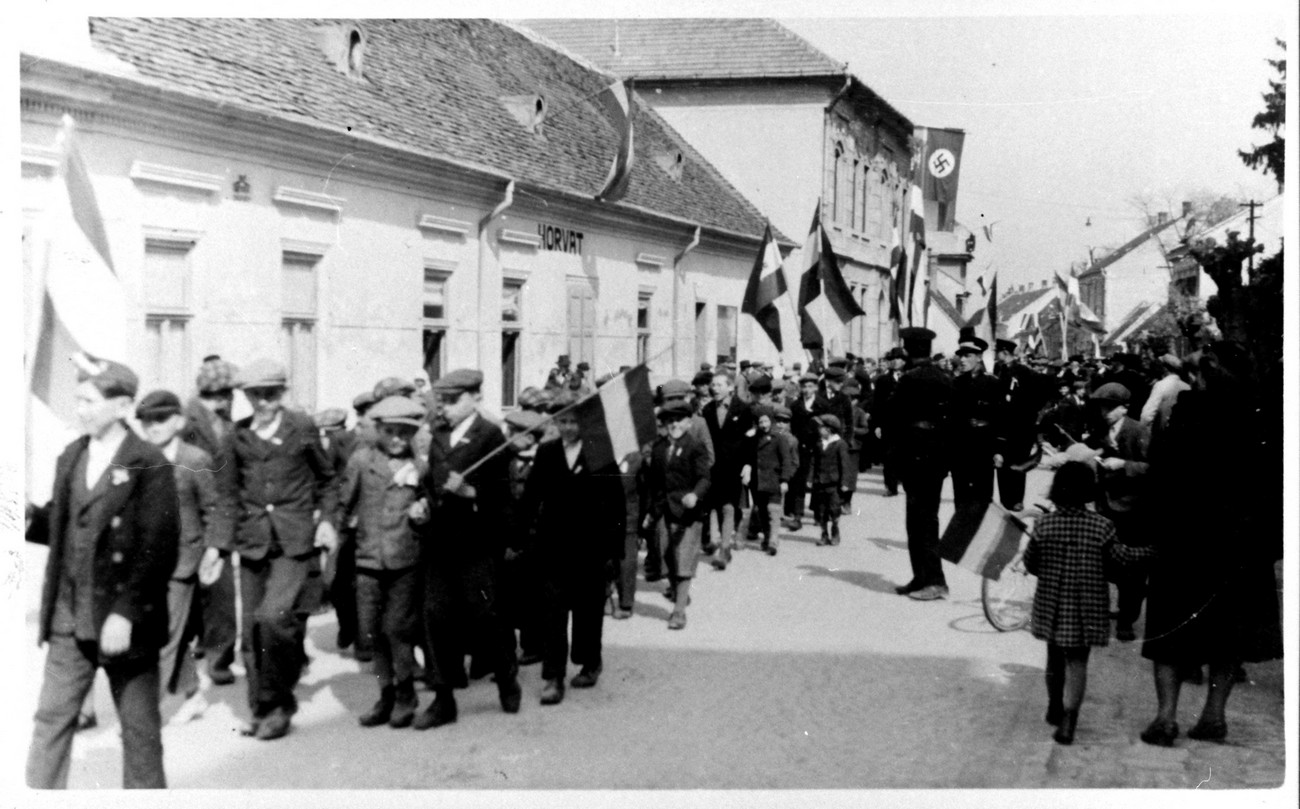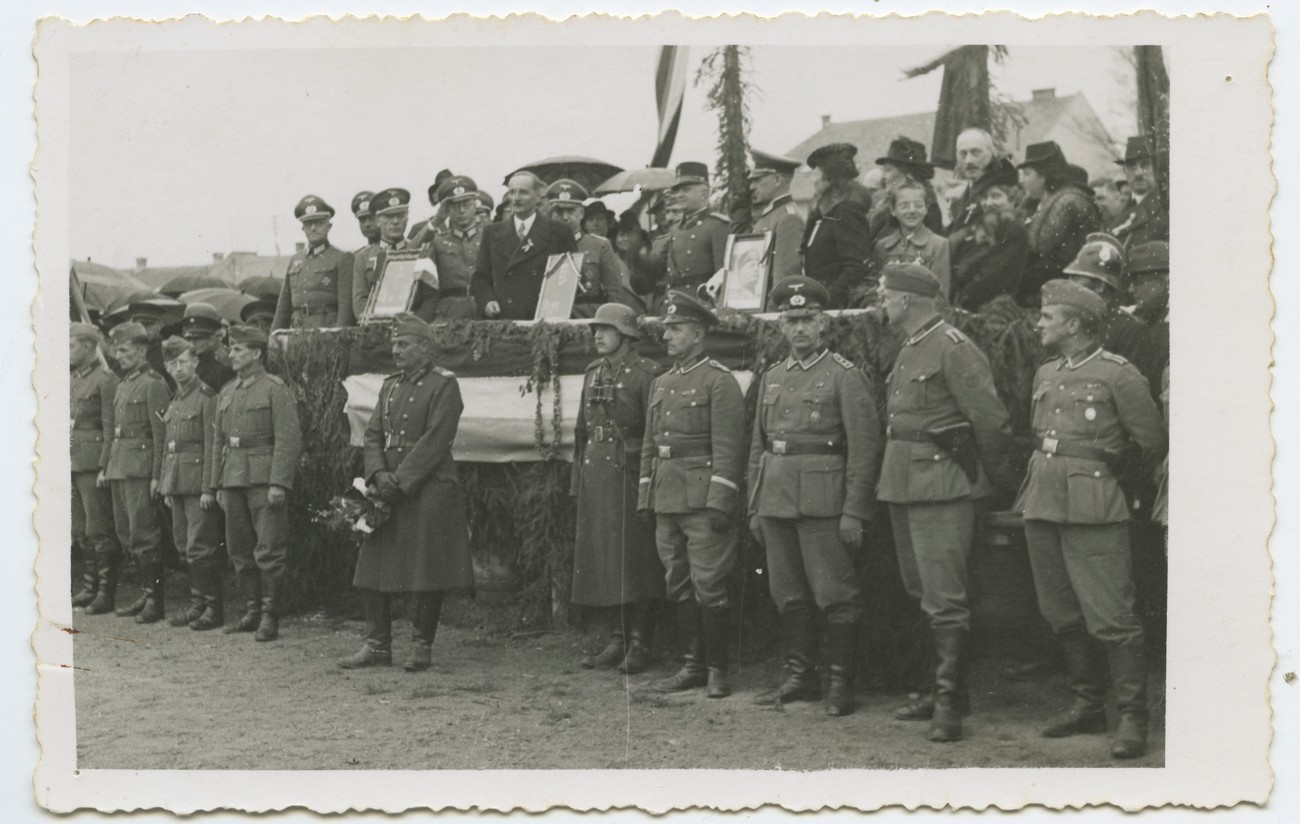Change of authority, new borders between Hungary, Germany, and the Independent State of Croatia
Hungary did not want to break the friendship and cooperation agreement signed with Yugoslavia on December 12, 1940, so the Germans occupied Prekmurje and Međimurje in a swift attack from Austria. The unit that was the first one to occupy Lendava then proceeded over the Mura river to Mursko Središče and further to Čakovec, which had recently been bombed. On April 16, 1941, Prekmurje was handed over to Hungary at a ceremony in Murska Sobota. There was no formal border agreement signed between Germany and Hungary due to a conflict of territorial interests involving Romania. The Hungarians, Romanians, and NDH all wanted Banat, which ultimately remained in the German hands. Both Hungary and the NDH lobbied intensely for their interests in Berlin, with the Hungarians being more successful since they were allies, while the NDH was a subordinate quisling state. In the end, the Germans gave Prekmurje and Međimurje to the Hungarians as compensation for Banat. The majority of the local population did not want to be under Hungarian rule. When the German army left, they were sometimes accompanied by flowers. In Prekmurje, the Germans kept towns in Goričko that had a predominantly German population: Fikšinci, Kramarovci, Ocinje, and Rottenberg as part of the divided Serdica. Similar to the Lendava creek, the Kučnica creek, the left tributary of Mura, also had a dividing role. It had been regarded as one of the borderlines between the German Empire and Hungary since the Middle Ages. Except it did not demarcate the Kingdom of Yugoslavia and Austria during the occupation, but Germany and Hungary. The tri-border became an ordinary border. Hungary also gained part of the Slovenian territory, which was otherwise under the NDH, namely the towns of Štrigova and Razkrižje with its surroundings. Before the war, the towns and their surrounding areas belonged to the Drava Banate. A mere month before the war began, an agreement was reached between two Catholic politicians, namely Fran Kulovec, the leader of the SLS party, and the Croatian Ban Ivan Subašič. Under that agreement, the towns were supposed to join the Banate of Croatia, and in return, the Drava Banate would get the municipalities of Draga and Osilnica in Bela Krajina.
